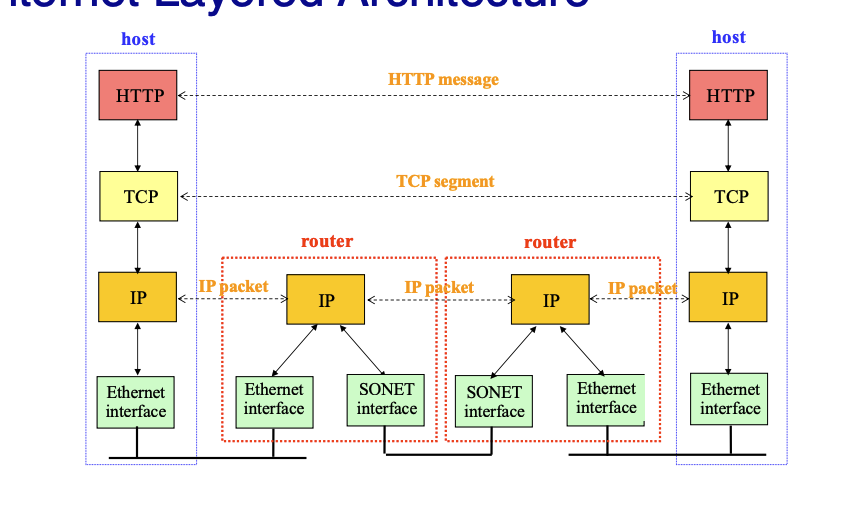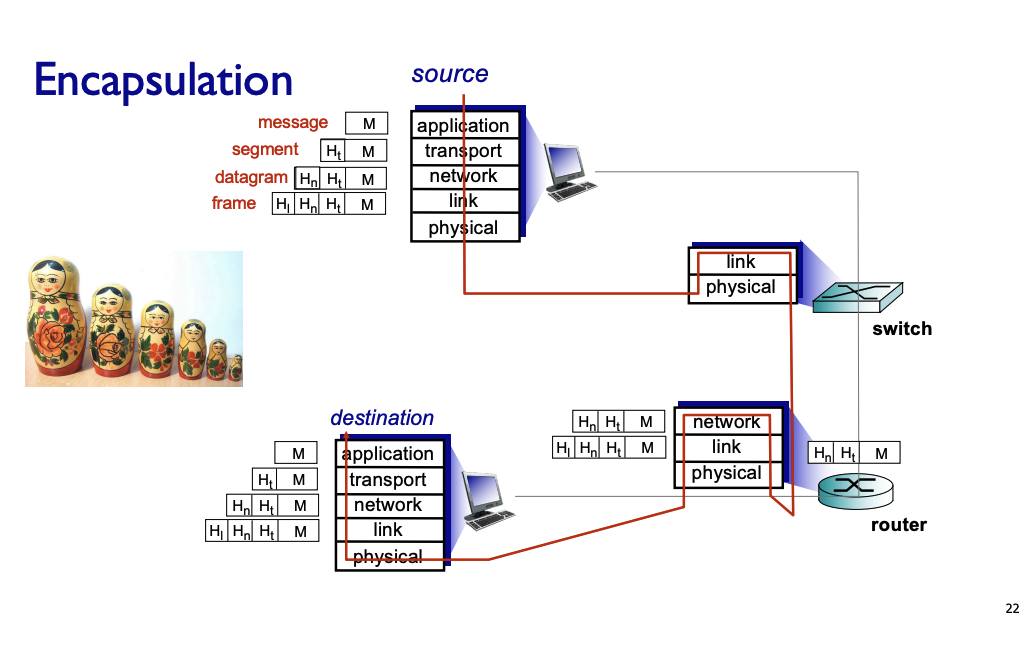Network protocol layers
Internet protocol stack
- Application Layer: supporting network applications
- FTP, SMTP, HTTP, Skype,..
- Transport Layer: process-process data transfer
- TCP, UDP
- network: routing of datagrams from source to destination
- IP, routing protocols
- Only one IP layer, unifying protocol
- Provide common abstraction for various network technologies
- link: data transfer between neighbouring network elements
- Ethernet, 802. 1 | (WiFi), PPP
- physical: bits "on the wire"
Downside of layering:
- Layer N may duplicate lower-level functionality
- E.g., error recovery to retransmit lost data
- Information hiding may hurt performance
- For TCP, the inference of packet loss might be wrong
- E.g., packet loss due to corruption vs. congestion
- Headers start to get large
- E.g., typically, TCP + IP + Ethernet headers add up to 54 bytes
- Layer violations when the gains too great to resist
- E.g., Network Address Translation (NAT - to be covered in Network Layer)
- Layer violations when network doesn't trust ends
- E.g., Firewalls (Security)

